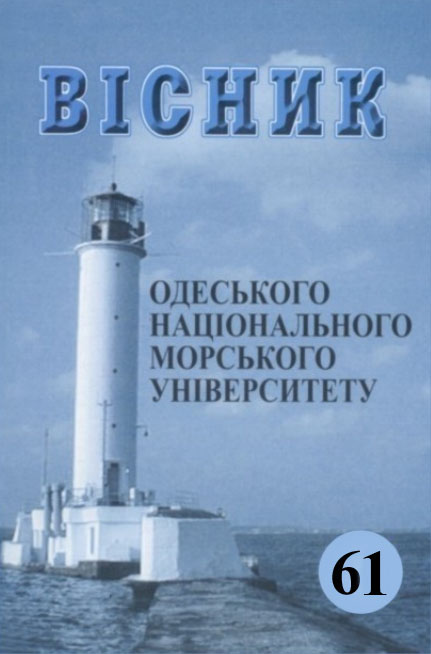Ensuring the operational characteristics of high-density technical fluids during their transportation by sea vessels
Main Article Content
Abstract
It is shown that the annual increase in the consumption of hydrocarbons, the prevalence of the use of liquid and gaseous fuels over solid fuels, and the absence of real alternatives to oil and gas as the main source of thermal energy leads to the gradual depletion of their continental deposits. A further increase in energy consumption in industry, transport and in everyday life increases the shortage of fuel of petroleum origin, which can be provided only by continental reserves. Therefore, in recent years, a large number of countries have been developing and expanding the development of resources on the continental shelf and the World Ocean. It is proved that drilling operations on offshore and offshore oil production platforms are associated with the use of special technical fluids (in particular, drilling slurries), which ensure the functioning, lubrication and cooling of underwater equipment. It is indicated that the delivery of such liquids to drilling platforms is carried out by marine specialized vessels that transport them in cargo tanks. Taking into account practical experience, it was shown that the time of their transportation can reach 7-10 days, which contributes to the deterioration of their functional characteristics due to stratification, but also contributes to the formation of dense silicon organic and graphite compounds at the bottom of the cargo tank. It was found that density stratification along the depth of a cargo tank depending on the transportation time can be: 9,2 % (for 6 hours), 19,5 % (for 12 hours), 32,9 % (for 18 hours), 48,0 % (for 24 hours). A method for maintaining the rheological characteristics of highdensity liquids is proposed. It has been experimentally confirmed that maintaining the density of technical fluids and ensuring a minimum level of density stratification (in the range of 0,4-1,5 % with a transport time of 6-24 hours) can be ensured by their additional circulation in the volume of the cargo tank. A system has been developed that provides additional circulation of technical fluids, and can be installed on a specialized vessel in accordance with the technological scheme directly by the ship's crew. It was established that the power required for the functioning of this system does not significantly affect the energy performance of a ship power electrostation.
Article Details
References
2. Karianskyi S.A., Maryanov D.M. (2020) Features of transportation of high-density technical liquids by marine specialized vessels. Materials of the International Conference “Scientific research of the SCO countries: synergy and integration, Beijing, PRC, part 2, pp. 150-153. DOI. 10.34660/INF. 2020.24.53688.
3. Iskenderadze A. E. K. (2014) O nekotoryh faktorah, vliyayushih na stabilnost burovyh rastvorov [On some factors affecting the stability of drilling fluids] / А. Э. К. Искендерадзе // Stroitelstvo neftyanyh i gazovyh skvazhin na sushe i na more, no. 8, pp. 40-42 (in Russion)
4. Sagin S.V., Matskevich D.V. (2011). Opticheskie harakteristiki granichnyh smazochnyh sloev masel, primenyaemyh v cirkulyacionnyh sistemah sudovyh dizelej [Optical characteristics of boundary lubricating layers of oils used in marine diesel circulating systems]. Sudovye energeticheskie ustanovki: nauchno-tehnicheskij sbornik, no. 26, pp. 116-125.
5. Sagin S.V., Solodovnikov V.G. (2017) Estimation of Operational Properties of Lubricant Coolant Liquids by Optical Methods. International Journal of Applied Engineering Research, vol. 12, no. 19, pp. 8380-8391.
6. Sagin S. V. (2019) Opredelenie diapazona stratifikacii vyazkosti smazochnogo materiala v tribologicheskih sistemah sudovyh dizelej [Determination of the viscosity stratification range of the lubricant in tribological systems of ship diesel engines]. Visnyk Odeskogo nacionalnogo morskogo unyversytetu, no. 1(58), pp. 88-98.
7. Budashko V.V., Nikolskyi V.V., Onishchenko O.A., Khniunin S.N. (2015) Physical model of degradation effect by interaction azimuthal flow with hull of ship. Proceeding Book of International conference on engine room simulators (ICERS12), no. 3(8), pp. 49-53.
